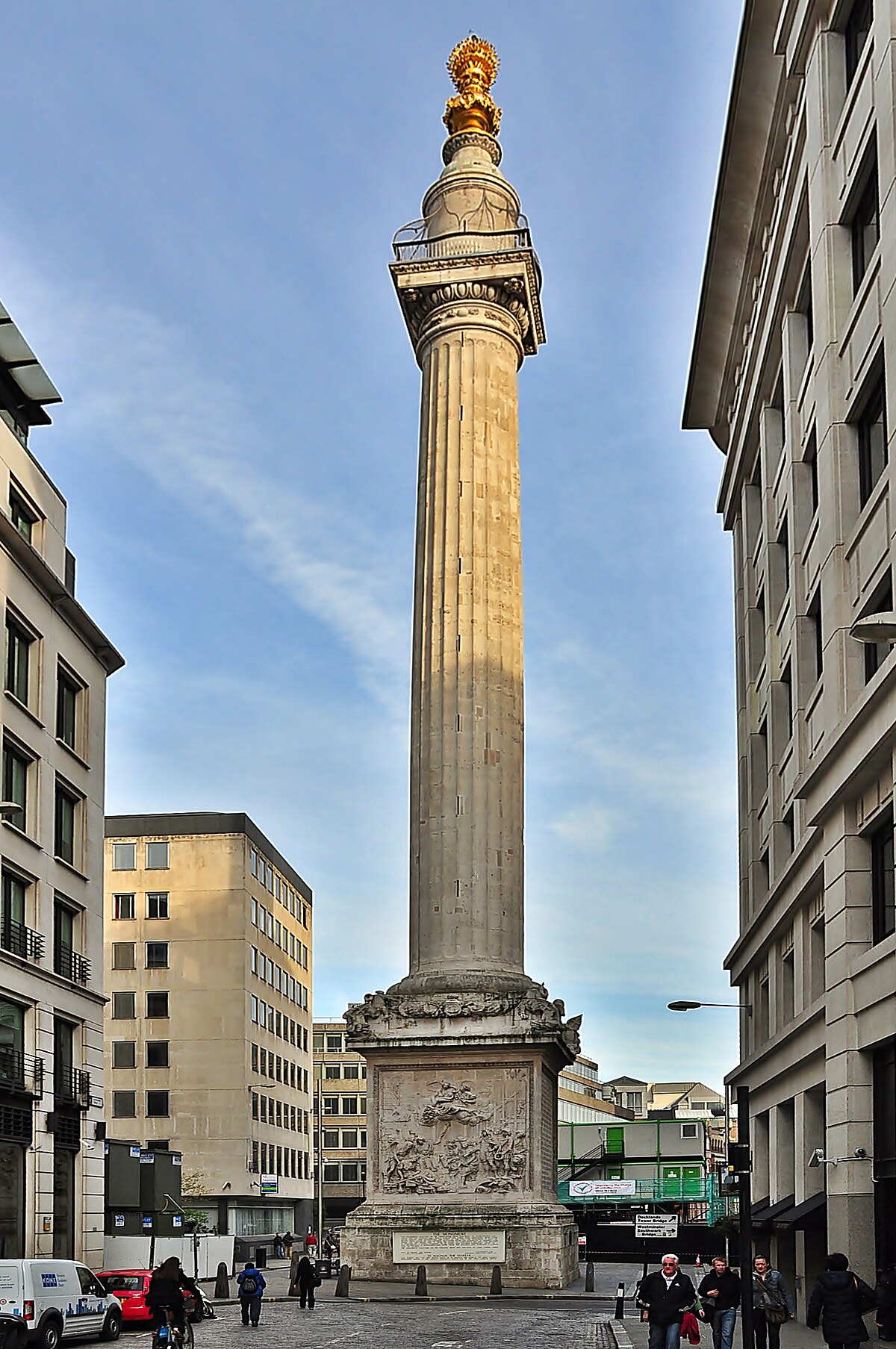It was a 110km drive from Chatham to my home for a week – Chertsey Camping and Caravanning Club Site in Sussex very near Heathrow Airport (SW of London). In the early evening, things went well and I smirked at the slow traffic heading away from London in the other lane. Then, about 40kms from my destination, things ground to a halt. Thinking this was the typical end-of-the-day London Slo-Mo, I turned on BBC Surrey and got the bad news. A woman had spent 10 hours earlier in the day in this section of the M25/4, the large freeway that goes around the south of London. An accident at 8 am involving 2 large trucks resulted in a fuel spill and it was anticipated it would take the better part of 24 hours to clean it all up.
The four lanes all edged off into a single-lane slip road (to Leatherhead, a section of the M25 with few exits). After 1½ hours, I had only gone 4 km, so pulled off, cooked dinner worked on this post, and eventually went to bed. I was roughly woken up and told I could not park there as this was a safety lane, despite that it was packed with trucks doing just what I was doing for miles. It eventually took me another 1½ hours to get to the campsite just before 10 pm.
March 27 was a big day. I registered into the campground, had my first shower for a while, and drove to Weybridge train station, about 5kms from Chertsey. Trains take about 40 minutes from here to get to Waterloo, the main train/tube station in SW London. I was on my way to see a dentist and arrange dental implants to deal with a bridge gone awry. At the campground, I did a badly needed load of washing and picked Anna up at Heathrow at 10 pm.
Wednesday, March 28 With a long dental appointment to get all the work done in the afternoon, Anna and I spent the morning on a walk-about through the Westminster area.
WESTMINSTER & ST JAMES
Purposely positioned outside the Old City (the burghers preferred to keep the monarch and parliament at arm’s length), Westminster has been the center of the nation’s political power for over a millennium. There are 150 historically noteworthy buildings in its 36 hectares.
London Eye. Standing 135m tall in a fairly flat city, this giant Ferris wheel with enclosed glass ‘capsules’ affords views for 25 miles in every direction, weather permitting. Interactive tablets give information about landmarks as they appear on the skyline. Each rotation takes a slow 30 minutes. The Eye is not in Westminster but we went by from Waterloo Station on our way to Westminster. 27.95£
Immediately across the river from the Eye are the following attractions. Just behind the Houses of Parliament are the Supreme Court, Churchill’s War Rooms, No 10 Downing St and Westminster Abbey.
Houses of Parliament. Officially called the Palace of Westminster, the heart of UK democracy is mostly Neo-Gothic rebuilt after an 1834 fire between 1840-58). There are two parts, the House of Commons with 650 MPs and the House of Lords with 763 members (once peers, they are now appointed through various means).
At the annual opening of Parliament in May, the Queen takes her throne in the House of Lords from Buckingham Palace.
Visitors can take a 90-minute guided tour on Saturdays year-round and weekdays during parliamentary recesses of both chambers.
Big Ben. The Palace’s most famous feature is this clock tower, named after the 13.5-ton bell. It was undergoing renovation and all but the clock was enclosed by scaffolding (the bell was also not able to ring).
No 10 Downing Street. The official residence of British Prime Ministers since 1732, it appears to be a small building on a plain-looking street but is three houses joined into one with 100 rooms and a 2000 sq m garden. There is no access to Downing Street – the end is an iron gate with several serious-looking guards.
Westminster Abbey. This is the finest example of Early English Gothic (1190-1300), it serves as a place of worship, where every monarch since William the Conqueror has been crowned and recounts the country’s history with the graves of 17 monarchs from Henry III (died 1272) to George II (1760). The abbey is FULL of graves and memorials, so many that it is almost overwhelming.
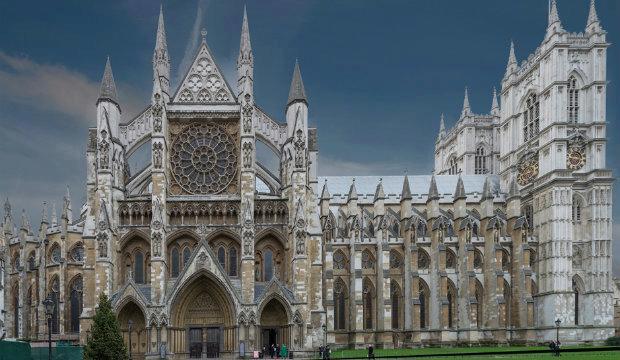
The famous spots are the Sanctuary (for royal coronations, weddings and funerals), Chapel of St John the Baptist, the shrine of St Edward the Confessor (founder of the abbey and the only complete saint’s body in England), Quire (for the 22 boys and 12 men of today’s choir), the Lady Chapel (Henry VIII) holding the Coronation Chair, Poet’s corner with the resting places of Chaucer, Dickens, Hardy, Tennyson, Johnson, and Kipling plus memorials to Shakespeare, Jane Austin, and Bronte) and nearby the graves of Handel and Sir Isaac Newton.
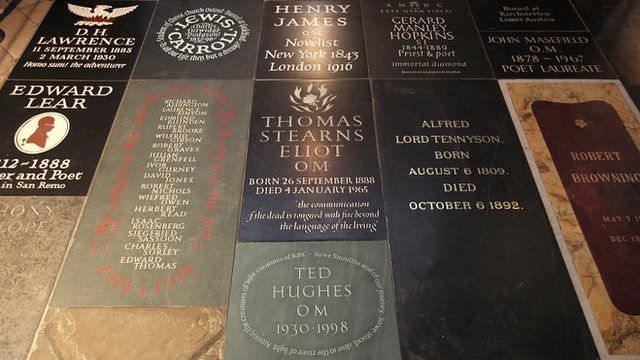
Sir Lewis Robessart, Lord Bourgchie

Also are the octagonal Chapter House (from 1250 when the monks preyed but were outlawed by Henry VIII), Pyx Chamber (1070, at 950 years, has the oldest door in Europe, used as a treasury and Royal Wardrobe), and the museum
St Margaret’s Church. Adjacent to the abbey is the House of Commons place of worship since 1614 (Sir Walter Raleigh is buried here). Free
Buckingham Palace. Built in 1703 for the Duke of Buckingham, it replaced St James’s Palace as the monarch’s official London residence in 1837. Elizabeth also lives at Windsor and in summer, at Balmoral in Scotland. The staterooms are open to the public when she is on holiday from July – September. Hung with artworks the tour includes the Throne Room and part of the garden. To see all the 16-hectare gardens is a separate tour. Admission also includes an in-depth look at Charles II. In front is Queen Victoria’s statue. Changing of the Guard. Occurs at 11:30 daily from April to July (alternate days weather permitting the rest of the year) and lasts 40 minutes. Big crowds.
Queen’s Gallery. Shows some of the palace’s treasures on a rotating basis – It was on Charles II. Royal Mews. See the state coaches (Gold State Coach of 1762 and Glass Coach of 1911) at this working stable. All-inclusive ticket 40£
We were in London over the Easter long weekend and everything was closed on Easter Friday and Monday. So we only had 3 days to see most of the sites of London. Plan your days to see one area trying not to move around too much. The Tube, 4.9£/ride is very expensive. Our train from Weybridge ended at Waterloo Station or Victoria Station from where it is possible to easily walk almost everywhere in 30 minutes. We didn’t ride the tube all week.
Many of the good museums in London are free. But it all averages out after paying the exorbitant entrances to the Royal places averaging over 20£ each. Buy tickets online or arrive early for the big attractions like the Tower of London or Westminster Abbey.
Thursday, Mar 29.
THE CITY OF LONDON. The boundaries of the ‘square mile’ have changed little since Roman times and it is now the central business district – the heart of world capitalism. No fewer than 10,000 live there but 300,000 work in the area. On Sundays, it becomes a virtual ghost town and most shops, eateries, and pubs are closed.
Borough Market. Located here since the 13th century, we walked through here on our way to Tower Bridge, ogling at all the fresh produce and takeaways.

Tower Bridge. London was a thriving port in 1894 when the elegant Tower Bridge was built. It can be raised to allow ships to pass.
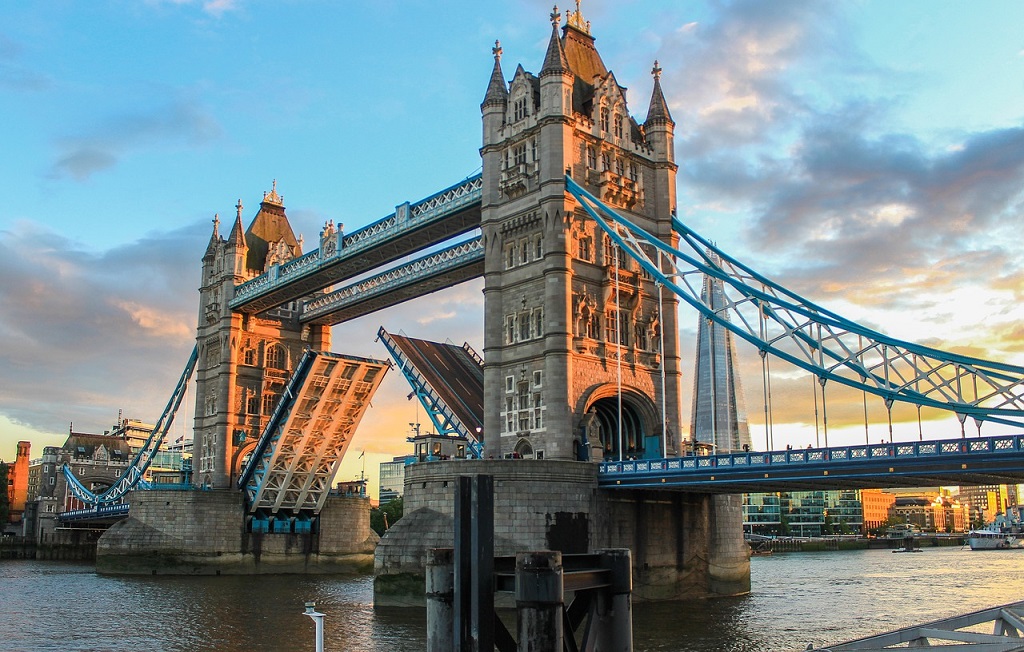
Tower of London. The now central White Tower (Norman architecture and 4 turrets, now holds a large armour collection and St John’s Chapel dating from 1080 and the oldest church in London) was begun in 1070 by William the Conqueror, and by 1285, two walls with towers and a moat were built around it, and the defences have barely been altered since. Used as a royal residence, treasury, mint, and armoury, it became most famous as a prison when Henry VIII moved to Whitehall Palace and then sent Anne Boleyn and Catherine Howard (his 2nd and 5th wives) to be beheaded. It is a castle with 22 towers.

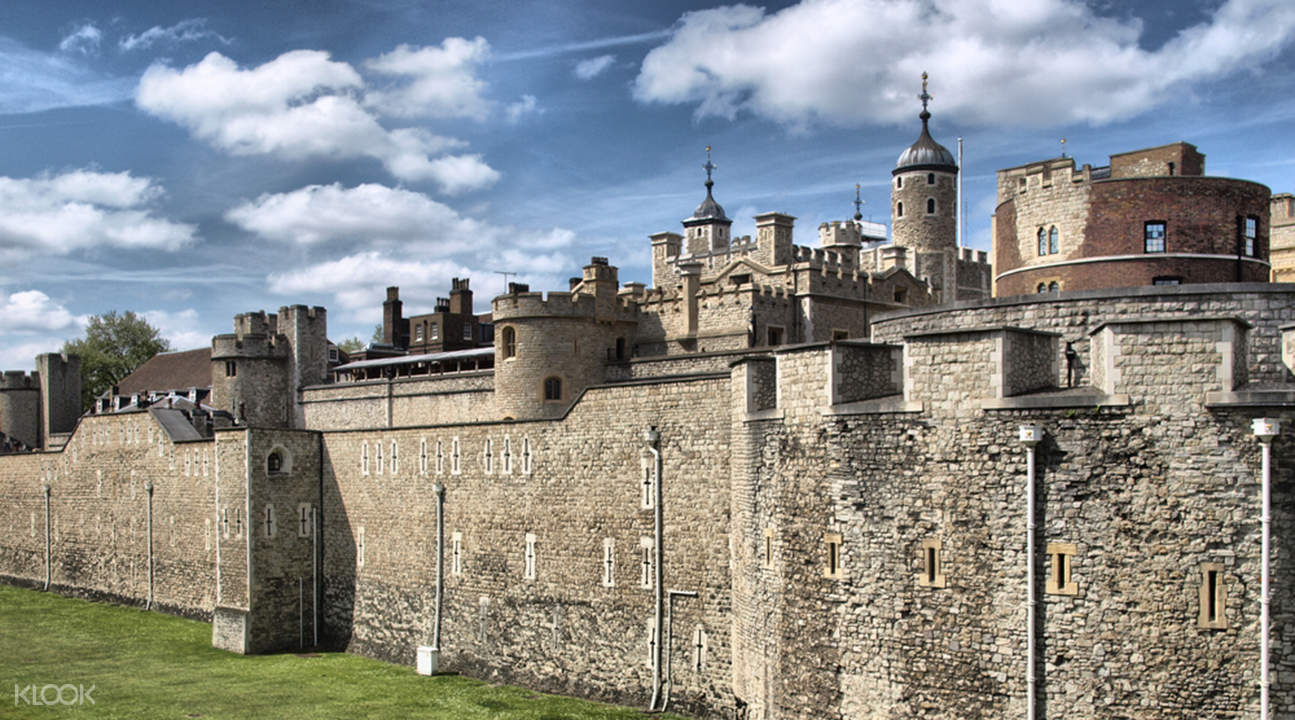
In the Waterloo barracks are the Crown Jewels – with 23,578 gems, the highlights are the platinum crown of the late Queen Mother with the 106-carat Koh-i-Noor diamond, the Imperial State Crown, worn by the Queen at the State Opening of Parliament.
The 530-carat 1st Star of Africa diamond at the top of the Sovereign’s Sceptre with a cross, is part of the largest diamond ever found.
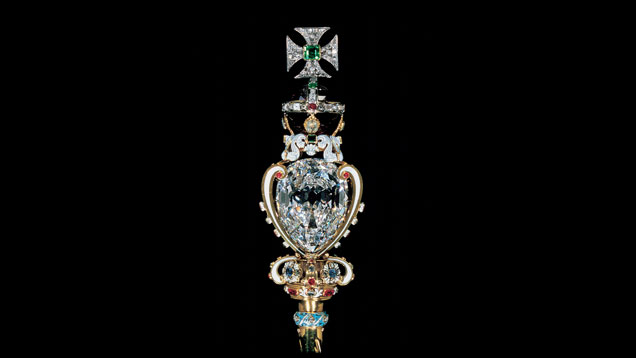
We latched onto a tour guide with 2 customers and got the in-depth story on every piece of the spectacular collection.
Medieval Palace. Dating from 1200, it was home to medieval monarchs and has the bedchamber of Edward I (1272-1307) and the throne room of his father, Henry III (1216-72).
Bloody Tower. This is where the 12-year-old Edward V and his little brother Richard were held and later murdered by the uncle, the future Richard III. Sir Walter Raleigh did 13 years here too under James I, when he wrote History of the World. Walk the ramparts, actually, the inner wall, to see many exhibits but few views. The famous ravens – 6 are fed raw meat and biscuits. According to legend, if the ravens depart the fortress, the Tower will fall. Their wing feathers are clipped just in case.
Free tours offered by the Beefeaters leave every 30 minutes from the bridge near the entrance. 29£
We then took a walking tour on our way to St Paul’s Cathedral.
Monument. Christopher Wren’s 1677 immense 60.6m Doric column of Portland stone is a memorial to the Great Fire of London of 1666 when 80% of London including 13,500 houses were destroyed. It stands 60.6m from the bakery in Pudding Lane where the fire is thought to have started.
30 St Mary Axe. Nicknamed the Gherkin, this is the 2003 Norman Foster skyscraper that has become the City’s most recognizable skyscraper.
Lloyd’s of London. Gawk at the stainless-steel external ducting, vents, and staircases of this 1986 postmodern building designed by Richard Rogers (of Paris’ Pompidou Centre).

Leadenhall Market. Attractive restaurants where the Roman Forum once stood.
Royal Exchange. This 1564 colonnaded building, once a financial institution, it now houses shops and cafes.
Guildhall. Exactly in the center of the Square Mile, this has been the city’s seat of government for 800 years. The present building dates from the early 15th century and is the only existing secular building to have survived the Great Fire of 1666. The lovely Guild Church has a lovely window and a ribbed dome.
Roman City Walls.
Museum of London. Taking you from Roman Londinium and Anglo-Saxon Ludenwic to the 21st-century metropolis in 24 galleries, this is an interesting museum. Free
Smithfield Market. London’s last surviving meat market with colorful Victorian arches.

St Bartholomew the Great. Dating to 1123 and adjoining one of London’s oldest hospitals, this is one of London’s most ancient churches with its authentic Norman arches.
St Paul’s Cathedral. Where there have been four other places of Christian worship for 1400 years, the Christopher Wren baroque masterpiece was built after the Great Fire between 1675 and 1710. The dome, still dominating the London skyline, is the world’s second-largest weighing 65,000 tons, and is famous for not being hit in WWII. It is a dome inside a cone inside a dome supported by 8 huge columns – walk 257 steps to the walkway around its base (the Whispering Gallery), and then 119 steps to the Stone Gallery and the 152 iron steps to the Golden Gallery at the very top with unforgettable views of London.
The Crypt has memorials to 300 war heroes including Wellington and Nelson and to Wren himself with the inscription “If you seek his memorial look around you”. 18£
Tate Modern. Across the Thames from St Paul’s, I promised Anna this would be the last place we saw today. This contemporary art gallery is in the revamped Bankside Power Station made of 4.2 million bricks. The free permanent exhibit offered little to enthuse me (people get paid to produce this rubbish) except for a lovely Dali and some Warhols. We got tired and possibly missed some good stuff on the fourth floor. The fee-paying exhibit was on Picasso. Free
We were now back very close to Waterloo to get the train back to Weybridge. We ate at an Indian restaurant recommended by someone on the train – very overpriced – and then visited the supermarket to make our meals.
Friday, March 30, was Good Friday and we spent a lovely day in the van with the heat on listening to the drumbeat of the rain on the roof. I got caught up on a lot of writing and reading.
Saturday, Mar 31
WEST END AND BRITISH MUSEUM
The west end is more a concept than a geographical area – it extends from Piccadilly Circus and Trafalgar Square on the south, Regent St to the west, Oxford St to the north Covent Garden to the east, and the Strand to the southeast. It seems that there are hundreds of theatres with all the well-known musicals plus high-end shopping and restaurants. Mayfair, west of Piccadilly Circus has all the most expensive streets on the Monopoly board, including Park Lane and Bond Street – and lots of pricey shops, Michelin-starred restaurants, society hotels and gentlemen’s clubs. Regent and Oxford Streets are the city’s main shopping streets.
Soho is on the west side with a grid of narrow streets and squares. Carnaby Street was the epicentre in the 60s but now is mostly chain fashion stores. Lisle and Gerrard Streets form the heart of Chinatown.
We started our day walking via the Eye to Westminster. Whitehall Street which follows the Thames north of the Parliament Buildings, has memorials to all the most recent wars. The one to the Battle of Britain in August/September 1940, when an attempted German invasion of the British Isles was repulsed is particularly good. We walked by No 10 Downing Street on our way to see Westminster Abbey. We then passed Churchill’s War Rooms and St James Park (lovely with yellow daffodils and pink cherry blossoms) walking north towards the West End.
Trafalgar Square. This is the center of London where rallies and marches take place, New Year is huge and locals congregate for anything from a communal open-air cinema and Christmas to political protests. It is dominated by the 52m-high Nelson’s Column and ringed by many splendid buildings including the National Gallery, Embassy of Canada, and St Martin-in-the-fields.
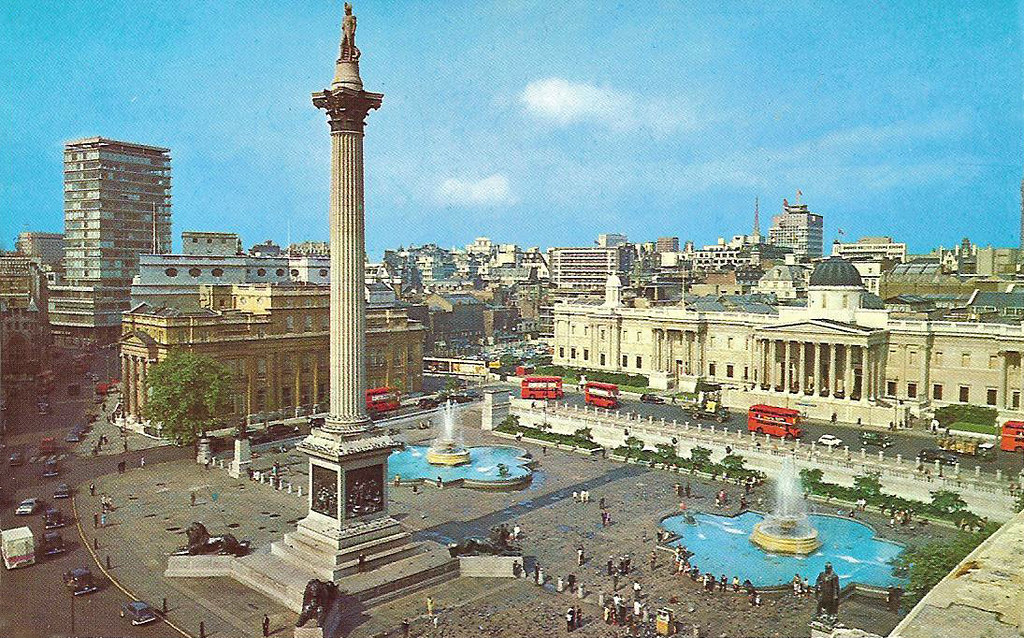
National Gallery. One of the world’s great art collections with 2300 European paintings, it covers from the mid-13th century to the early 20th. When seeing several museums in one day, you have to be selective. We headed for the east wing skipping rooms 1-39 (lots of religious art) to see the 18th-century British artists: Gainsborough, Constable, and Turner and the post-Impressionist masterpieces by Van Gogh, Renoir, Monet, Saurat, and many others. Free
National Portrait Gallery. Close to the National Gallery, this was nice too as we were selective about seeing more recent portraits. Free
Piccadilly Circus. Where all sorts of traffic meet, it is chock full of tourists gawking at the magnificent buildings and video screens.
British Museum. Begun in 1753, the country’s largest museum and one of the world’s oldest and finest, it is London’s most visited attraction with more than 6 million visits annually. Acquired through acquisitions, bequests, and plundering the empire. As with all huge museums (think the Louvre or Hermitage), one must be selective or sensory overload and museum fatigue sets in. But this one is so good with its excellent, brief labels, it continues to fascinate. Free.

Some of the highlights were.
The Grand Enlightenment Gallery: Set in a library and built in 1820, this wonderful space shows an eclectic collection.
Egyptian: mummies, the huge 7.5-ton bust of Pharaoh Ramesses II
Mildenhall Treasure: Roman silver bowls, plates, and spoons.
Sutton Hoo Ship Burial: This intact ship was uncovered under a burial mound and had a hoard of amazing Saxon treasures from a stunning face mask to jewelry to silver.
Lewis Chessmen: Carved from walrus ivory, 78 chess pieces portray faceless pawns, worried-looking queens, bishops with their mitres turned sideways and rooks as ‘warders’ knowing away at their shields.
Rosetta Stone: The key that cracked the code to ancient Egypt’s writing system with the same passage repeated in hieroglyphics, demotic (cursive ancient Egyptian script used for everyday use), and Greek. Discovered in 1799 and weighing 762kg, it contains a decree exempting priests from tax on the first anniversary of young Ptolemy V’s coronation.
Winged Bulls from Khorsabad: This awesome pair of alabaster winged bulls with human heads once guarded then entrance to the palace of Assyrian King Sargon II at Khorsabad in Mesopotamia, a cradle of civilization in present-day Iraq.
Parthenon Sculptures: A white marble temple dedicated to Athena, the Parthenon was part of a fortified citadel on the Acropolis in Athens. A bomb in the 1600s destroyed a large part of these sculptures and friezes. Models and interactive displays show how they all fit together.
Coventry Gardens. Once a garden, it is now shops and restaurants. We watched a street performer for way too long.
London Transport Museum. It covers how London developed as a result of better transport from horse-drawn omnibuses, early taxis, the underground and to Crossrail, a high-frequency rail service linking Reading with east London, SE London, and Essex due to open in 2018. 17£
Sunday, April 1
CHELSEA & KENSINGTON
Known as the royal borough, this area has the highest income earners in the UK. Kensington High St has lots of chains and boutiques and the charity shops resemble fashion outlets.
Instead of taking the train to Waterloo Station, we stopped at Clapham Junction and ended at Victoria Station, about 30 30-minute walk closer to our destinations on this cold but not rainy day. We walked over 20 km to see all this stuff.
Victoria & Albert Museum. Known as the Museum of manufacturers when it opened in 1852, it houses the world’s largest collection of decorative arts from Asian ceramics to Middle Eastern rugs, Chinese paintings, Western furniture, fashion, and everyday domestic appliances. With 100 galleries, one has to pick carefully, although most of the pieces and the method of the exhibition are superb. Free.
Some of the highlights were:
Ardibil Carpet: One of the world’s most beautiful carpets, it was completed in 1540 and commissioned by the Shah of Iran. Made of knotted silk and wool, it has great artistry and design.
Tipu’s Tiger: This 18th-century wood and metal mechanical automaton depicts a European being savaged by a tiger. When a handle is turned, an organ mimics the cries of the dying man, whose arm also rises.
Fashion Gallery: With clothing from the 15th century to the present, evening wear, underwear, and iconic pieces are shown chronologically.
Raphael Cartoons. These 7 drawings by Raphael depicting the acts of St Peter and St Paul, were the full-scale preparatory works for seven tapestries woven for the Sistine Chapel in the Vatican.
The Great Bed of Ware. This huge bed was made in the time of Queen Elizabeth and mentioned in Shakespeare’s Twelfth Night. The construction technique is detailed. It is covered in ancient graffiti.
Jewelry Gallery. This a stunning display from ancient Greece to the modern-day. In the Middle East section, there is jade and jewelry of Shah Jahan of Taj Mahal fame.
The Hereford Screen. This choir screen made of wood, iron, copper, brass, and hardstone was originally made for Hereford Cathedral
Natural History Museum. This shows the irrepressible Victorian spirit of collecting, cataloging, and interpreting the natural world. Free
Science Museum. Has 7 floors of interactive exhibits from energy production, and communication technology to space. Free
Albert Memorial. On the southern edge of Kensington Gardens and across from the Great Albert Hall (wonderful opera house), is this ostentatious memorial to Queen Victoria’s German husband Albert (1819-61). Although he did not want a memorial, the Lord Mayor built the 53m-high gaudy Gothic memorial – the 4.25m-tall gilded statue of the prince, surrounded by 187 figures representing the continents, the arts, industry, and science, which went up in 1876.

Kensington Palace. Built in 1605, it was the royal residence from William and Mary of Orange in 1689 until George III became king and relocated to Buckingham Palace. Now it is still a residence to the young royals, Prince William and Catherine and Prince Harry. The King’s and Queen’s state apartments are open to the public. 17£
Kensington Gardens. Immediately to the west of Hyde Park, the 107-hectare expanse has a sunken garden, the large Round Pond with swans and ducks, a memorial fountain to Diana, a playground dedicated to Diana, an Italian Garden with nice fountains and expansive lawns with many big trees. Free
Hyde Park. At 145 hectares, Hyde Park is London’s largest open space, expropriated from the church in 1536 by Henry VIII and turned into a hunting ground and later a venue for duels, executions, and horse racing. The 1851 Great Exhibition was held here, and in WWII, it was an enormous potato field. Now there’s boating on the large lake, the Serpentine, summer concerts, and film nights.
Speakers Corner on the northeast was interesting. There was a large crowd and about 8 people on their stand, some speaking to large crowds and some to none. Most were spouting off and not too interested in the crowd including an old Christian zealot expounding the benefits of Christianity. He would not shut up no matter what was said. There was a large crowd of Muslims contradicting some of his erroneous comments. One fellow was speaking on men’s rights. I think you had to bring your own stool.
Wallace Collection. This museum gives a glimpse of 18th-century aristocratic life. Sir Richard Wallace was the illegitimate son of the 4th Marquess of Hertford. The 1st, 3rd, 4th Marquess’ and Wallace were profligate collectors of painting, ceramics, furniture, statues, and armory. When Wallace died, his wife gave it all to the City of London including Hertford House, which holds the museum. It is a wonderful, over-the-top place that because of its wide scope of objects, makes for a lovely experience. There are more objects from Versailles than in Versailles (after the Revolution most things were available at fire-sale prices). I loved the 30 or so hunting scenes with dogs and dead game. Free
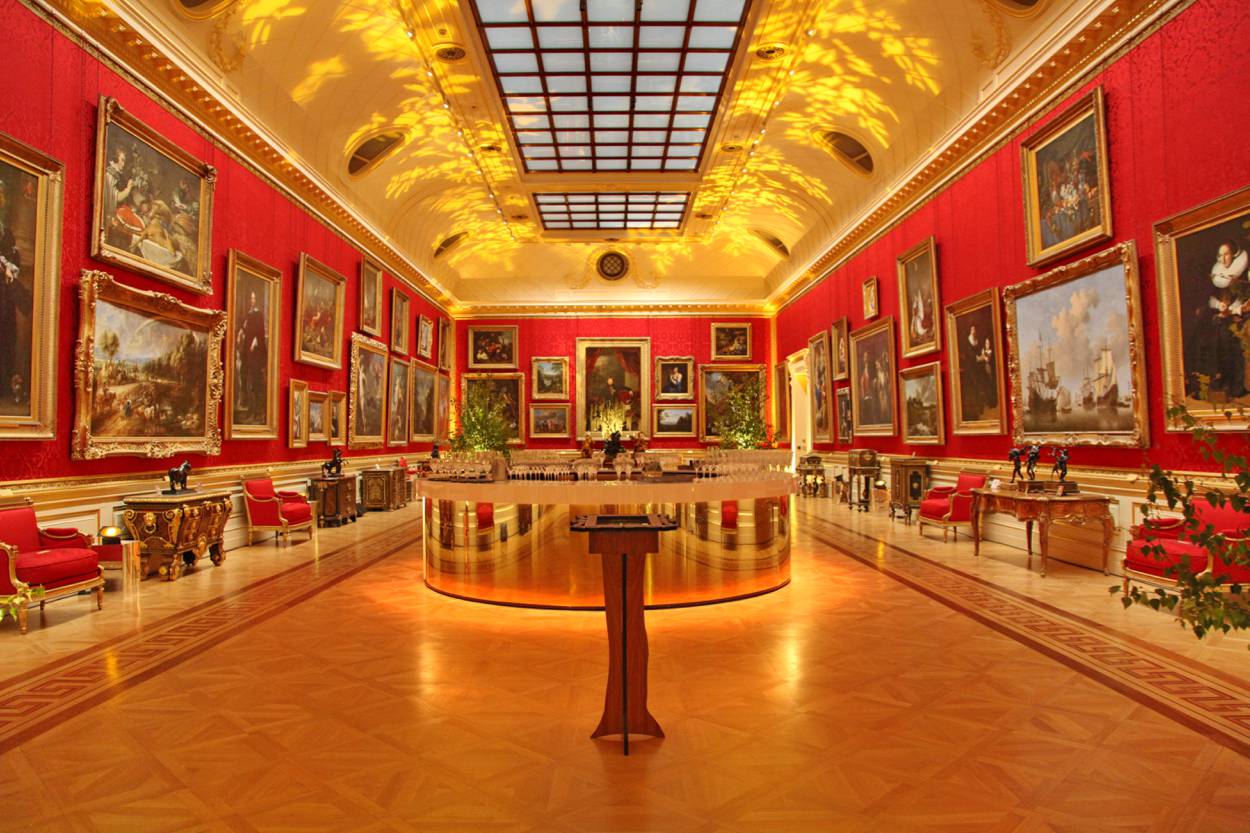
221B Baker Street. The fictitious home of Sherlock Holmes, this address has been turned into a gift store and upstairs museum with guided tours (15£) to the made-up space. Anna walked up here while I saw the Wallace Collection.
Harrods. This iconic department store just south of Hyde Park was closed on Easter Sunday but open on Monday.

Mon, Tues April 2,3 Outside Central London
Kew Gardens. The Royal Botanical Gardens at Kew started in 1759 with 3 hectares and is now 120 hectares. It has the most comprehensive botanical collection in the world including the world’s largest collection of orchids. It is Unesco-listed. We entered at the Lion entrance and did a complete circle of the gardens. Highlights were: Victorian Palm House, Treetop Walkway, a gallery with watercolour paintings of flowers and plants from Australia and New Zealand that were amazing, Kew Palace (country retreat King George III and Queen Charlotte) with its kitchens, water lily pond, Princess of Wales Conservatory (another big greenhouse), the garden of grasses, Japanese Gateway, Davies Alpine House & Rock Garden, daffodils in bloom and tons of huge trees. Temperate House (huge glasshouse) and the Great Pagoda were both closed for renovation. 17£, 15£ reduced.
Camden Market. In northwest London just above Reagent Park, Camden Town is best known for its market gets 10 million visitors per year and is one of London’s most popular attractions. What started as a collection of craft stalls by Camden Lock on the Regent’s Canal now extends much farther north. Full of small shops, its biggest attraction is all the food stalls. We ate at a falafel shop and a Mexican place.

Highgate Cemetery. Until the 1800s most burials had taken place in church graveyards, but by the 1820s, these had become so overcrowded and unsanitary that a new solution had to be found. Outbreaks of cholera and typhoid made the action more urgent. People who were not members of the Church of England also wanted somewhere to bury their dead according to their rites. Private companies set up beautiful garden cemeteries on the edge of towns open to people of all denominations. In the 1830s and 1840s, eight cemeteries were developed around London. One was the 17 acres west part of Highgate Cemetery in 1839 and the 19 acres of the East Cemetery was added in 1860. Run as a private company to make a profit, it attracted burials by the splendour of its architectural features and the beauty of its landscape. Cemeteries were also intended to be tourist attractions and Highgate was extremely popular. The Eastside was laid out to maximize the space available for burial and pathways were designed to be used for burials as the cemetery filled up and no space was wasted. The most famous person in the East is Karl Marx. Infant mortality was high with only 1 in 5 children of poor families making it to adulthood (4 out of 5 in rich families) and the average age of death was about 40. Grave robbing was common as bodies were needed for medical schools and murders occurred simply to get a body. 173,000 people are buried in 55,000 graves in Highgate.
Unlike the situation in many other countries, once buried, the deceased remain in their graves in perpetuity. During the 20th century, the cemetery became unprofitable to run as space ran out and the cost of maintenance and security went up. It became neglected, and overgrown and vandals had their day. The company collapsed in a financial scandal. Most families failed to maintain the monuments. In the 1960s and 1970s, most cemeteries were taken over by local councils and are now supported by the taxpayer. Highgate is different as it was rescued by a charity and is now run for the public benefit, not for profit. Money paid as entry fees and to take tours is reinvested in conservation, restoration and keeping the cemetery open. Although there is now very little space available, it is still open for new burials. The entrance fee is 4£ and the 1¼ hour tour is 8£.
We walked the circuit through the east half in about 25 minutes and then joined the very informative tour through the west side (the only way it is possible to see the west). It is also much more interesting architecturally. The significant parts are the Egyptian Avenue, Lebanon Circle, and Terrace Catacombs.
Two important graves are those of Michael Faraday and Thomas Sayers.
Thomas Sayers (1821-1865) was the last great bare-knuckle fighter. Though an illegal activity, it functioned underground, and at the age of 28, Sayers decided to make his living with his fists. Unable to find opponents in his weight category (he was only 5’ 8” tall and 150lbs), he challenged a leading heavyweight and after losing only one fight of 15 he accepted a challenge from US champion John Heenan, 40lbs heavier, 5” taller and 8 years younger.
The fight (April 1860) caught the public’s imagination on both sides of the Atlantic, getting more attention than a fight ever had before. Sayer’s right arm was damaged early in the action and he had to fight one-handed for most of a ferocious contest that went on for more than two hours. Sayer succeeded in closing Heenan’s right eye making his whole face a bloody mess. After more than 40 rounds, the fight ended in chaos when Heenan illegally tried to strangle Sayers, the crowd invaded the ring and police stopped the fight. The referee finally declared a draw but the ring was re-pitched and the fight continued for another 4 or 5 rounds with neither man able to box proficiently. Both were awarded a championship belt, they toured England together and became firm friends for a while.
Tom Sayers never fought again. Money was raised publicly and he received £3,000, enough to fund a comfortable retirement. He died from diabetes, TB and alcohol abuse. His was the largest funeral ever held at Highgate with over 100,000 in attendance. His tomb is guarded by the stone image of his mastiff, Lion.
This fight has been considered the first world championship. After it, boxing became legal under rules developed (and still used) by the Marquis of Queensbury.
Michael Faraday (1791-1867)
Although Faraday received little formal education, he was one of the most influential scientists in history.
During his lifetime, he was offered a knighthood in recognition for his services to science, which he turned down on religious grounds, believing that it was against the word of the Bible to accumulate riches and pursue worldly reward, and stating that he preferred to remain “plain Mr. Faraday to the end”. Elected a member of the Royal Society in 1824, he twice refused to become President. He became the first Fullerian Professor of Chemistry at the Royal Institution in 1833.
Having provided many various service projects for the British government, when asked by the government to advise on the production of chemical weapons for use in the Crimean War (1853–1856), Faraday refused to participate citing ethical reasons. He had some years before turned down an offer of burial in Westminster Abbey upon his death, but he has a memorial plaque there, near Isaac Newton’s tomb. Faraday was interred in the dissenters’ (non-Anglican) section of Highgate Cemetery.
June 7
Recently commemorated in London was the first anniversary of the deaths of the 11 people killed on London Bridge. The one Canadian, Christine Archibald was a patient of mine when I worked in Castlegar, BC. Her parents have been real troopers in how they have dealt with this tragedy.
After arriving from Windsor at Waterloo Station, I added 3 NM ticks by visiting by the train stations at King’s Cross, St Pancras International, and Paddington Stations.
Kings Cross Station. This is a major junction station in the London Tube system and is especially important in its proximity to St Pancras. It has a modern sloped glass roof and a huge Tyranasorus Rex model as an advertisement for Jurassic Park.
St Pancras International Station. A sister train station with King’s Cross, trains from here leave for the East Midlands (Nottingham, Sheffield, and Leeds), and Eurostar trains leave for Paris Nord and Brussels. Next to the modern east wing is the old brick building with its huge glass-domed roof. Shops line the corridor housed in small barrel-vaulted spaces.
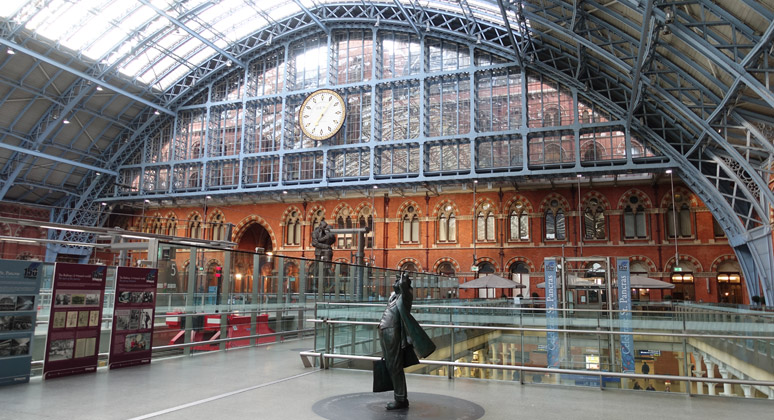
Paddington Station. This is a Central London railway terminus and Underground station. Much of the mainline station dates from 1854. In 1863, it was the terminus of the world’s first underground railway. Major upgrades occurred in the 1870s, 1910s, and the 1960s, adding different platforms. It was damaged in WW II but the original design is still recognizable. The Great Western Main Line terminates here providing service to west London and the Thames Valley, intercity service to SW England and S Wales and is a terminus for the Heathrow Express. There are two separate tube stations providing connections to Bakerloo, District, and Hammersmith & City lines.
After my dental appointment, it was a 15-minute walk to Tate Britain and then past the Parliament Buildings, Westminster Abbey, Big Ben (clad in scaffolding) London Eye to Waterloo Station and the train back to Windsor.
I thought I had found the only free parking in all of Windsor in a quiet neighbourhood but got another £70 parking ticket! I now have so many of these that I have lost track but have no plan on paying for any of them. I will never be back to the British Isles and I doubt that there is any way for them to collect.
Tate Britain. In a lovely, grand building on the Thames south of the parliament buildings, it has British art from the 1400s including a huge Turner collection and several Henry Moore sculptures and drawings. Free

June 13
I then had to return to London on June 13 for another dental appointment. I slept partway in Reading and then left early to beat the London traffic. This time I found parking near the High Barnet Tube Station with a much cheaper fare into the city. This is true far north of London – one goes from the frank countryside to enter the city.
London Bridge Station. This a central London rail terminus and underground station immediately SE of London Bridge. The mainline station is one of the oldest railway stations in the world having opened in 1836. Waterloo is one of the two mainline termini south of the River Thames and is the 4th busiest in London, handling over 50 million passengers per year. It was rebuilt in 1849, 1864, 1970, and most recently in 2010 when all platforms were rebuilt and two new street-level entrances were added and is now ultramodern. The Shard also has an entrance and a larger bus station was constructed in front. It is the rail terminus of most commuter trains from SE England, but also Cambridge, Sussex, and Kent.
The Shard. This architecturally striking vertical city incorporates retail, offices, hotels, apartments, restaurants, and a public viewing gallery. It sits astride London Bridge Station. The government of Qatar became a partner in 2008.
At 310m and 95 stories, it is the tallest building in Europe and is stunning – a narrow vertical pyramid. Restaurants and bars are on floors 1-3, offices on floors 4-28, the Shangri-La Hotel in the centre and apartments (each has views on all four sides) above that. The public viewing galleries are on the final floors, 240m above ground. The spectacular 66m final glass and steel summit tapers off disappearing into the sky. 8 sloping glass facades, the shards, define the shape. The extra white glass double skin is naturally ventilated with internal blinds that respond automatically to changes in light levels. 6.000 people visit the viewing platform daily.
White Cube Gallery – Bermondsey. With only 3 galleries, the large rooms had only a few pieces each, most abstract geometrics and some hanging “chandeliers” of glass and plastic. Free
It was a 1½ hour walk to the dentist, I didn’t have that much time and so deviated to Waterloo Underground and took the tube 2 stops. There were long delays at the dentist and I didn’t leave till 2 pm but tried to get in a few more London sites on a walk north.
House of Vans. Directly under the south-bound railway tracks of Waterloo Station, this place is a maze of ancient barrel-vaulted corridors. They have an interesting combination: live music on two stages and a skate park for skateboards and BMX bicycles.
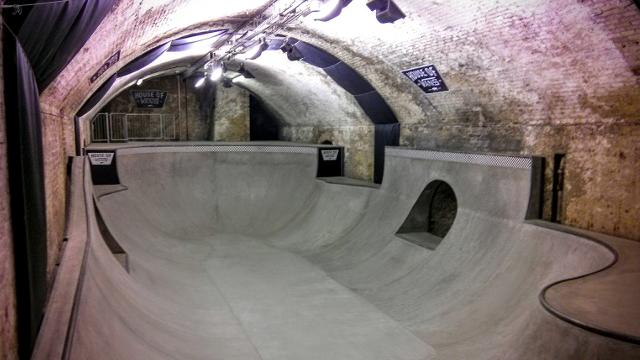
Somerset House and the Courtauld Gallery. I crossed the Thames on the Liverpool Bridge to this gorgeous mansion and spectacular collection donated by Samuel Courtauld, a British textile magnate. He founded the Courtauld Institute of Art in 1932 to give his collection and then established the gallery. On the 1st floor is a small Medieval/Renaissance collection of religious icons and wonderful ivory boxes and carvings. The art upstairs is spectacular with an emphasis on Impressionists: Reubens, Renoir, Degas, Monet, Cezanne, Seurat, Manet, Rodin, Sisley, and several more famous guys. The descriptions accompanying each piece were brief and to the point. £6 concession
This part of London is a center for restaurants, shops, theatres, and a major tourist magnet.
Hippodrome Casino. It took 4 years and £50 million to restore this casino/restaurant/nightclub to its original 1900s design between 2009-13. Casinos are unusual here as there is a lobby in the front and the casinos are entered later. All the usual games were available with blackjack, roulette, gai pow poker, and a few slots and VLTs. The blackjack rules were quite different with many more options and payouts than in Las Vegas. The smallest bet was £5 and many of the players were Chinese. Free
Empire Casino. There was a £1 fee to join and the casino was entered through a large lobby and was downstairs. Again there were relatively few tables but most were busy. £1
I then walked north to a tube station and got the underground to High Barnet and my car and drove north to Luton to see the SW of England for my last full week in the British Isles.
June 26-27
EAST LONDON
This was my 4th and last trip to London and my final dental appointment. I slept in Dartford and it was a short drive to Holy Trinity.
Holy Trinity Church. I wondered why this small, plain church was in the NM religious temples series. It was first consecrated in 1837, destroyed in the blitz in 1949 and rebuilt in 1957. It is brick with a copper roof and plain inside except for a nice painted half-dome over the altar.
St Dunstans All Saints Church Stepney. 1000 years ago it was dedicated to All Saints and became the mother church of the East End. With the ancient port of London nearby, it became known as the church of the High Seas and the red ensign still flies over the tower. It is a small stone church in the middle of large lawns and tomb graves – it has a high square stone tower, a crenellated roof-line, and a hexagonal chapel. The interior has nice stained glass.
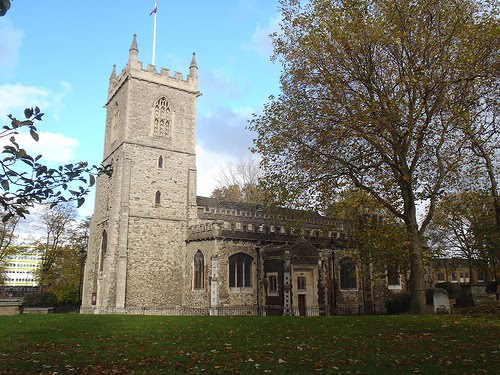
V&A Museum of the Child. This museum covers childhood from the 16th century with a jumbled collection of toys, dolls, rocking horses, and models. Come here only if prepared to dodge thousands of little kids running amuck. Free
GREENWICH. Besides its association with time, it has an extraordinary cluster of buildings that have earned Greenwich a Unesco World Heritage listing. It is in East London south of the Thames.
I found a great metered parking lot near the Royal Observatory, left my van there all day, and didn’t get a ticket! I caught the DLR Railway from Cutty Sark station into London for my dental appointment and returned in the afternoon to see Maritime Greenwich. In the evening and morning a small, emaciated red fox hung around the van mooching food – real wildlife. A flock of parakeets flew around the lot.
Cutty Sark. This was the last of the great clipper ships to sail between China and England in the 19th century. The ship was destroyed in a fire in 2007 and required a £25 million restoration. The exhibition in the ship’s hold tells the story of a tea clipper. £18.50 with the Royal Observatory

National Maritime Museum. This has exhibits on The Battle of Trafalgar (and Nelson), great figureheads, colonization of North America and the slave trade, the Battle of Jutland in 1916 (6000 English and 2500 Germans lost their lives), wars in Indian, Opium Wars, the 19m state barge of Frederick, the Prince of Wales, and Miss Britain III (first boat to top 100mph). A surprising number of large paintings are part of the exhibits. Free
Royal Observatory. In Greenwich Park, climb the hill for good views of London from the observatory built by Charles II in 1675 to help solve the riddle of longitude. Straddle the western and eastern hemispheres and see the Weller Astronomy Gallery and Peter Harrison Planetarium.
I then had a mammoth museum day trying to see all that I had missed so far in London. I took the DLR (Docklands Light Rail) again from Cutty Sark Station at 7 am to get into the city. I walked between several and took the underground to the last three as they are all separated by some distance.
Imperial War Museum. Housed in what was the Bethlehem Royal Hospital (a psychiatric hospital also known as Bedlam), this museum focuses on military action involving British or Commonwealth countries during the 20th century. Some or the highlights are a pair of 15-ton naval guns in front, several planes, and V2 rockets hanging in the atrium and the World War galleries. There is a large Holocaust exhibit at least as good as the excellent museums in Washington DC and Jerusalem. Free
Haywood Gallery. In Southbank Centre, the Haywood hosts a changing roster of contemporary art and photography (most not worth seeing).
Charing Cross Station. This train station is full of beige brick with a glass roof giving it a wide open, airy feel. It is the train station for SE England from Hastings to Canterbury.
Sir John Sloan Museum. Housed in the home of the architect John Sloan (1753-1837), it focuses on his architecture and archaeology collection, personal effects, and curiosities, many eccentric. Free
Saatchi Gallery. The ground floor had some truly awful contemporary art – what they called experimental. Two of the upper galleries were dedicated to photojournalists documenting the plight of Nepalese (80% women and 50% underage) caught in slavery and trafficking, especially since the 2015 earthquake when 650,00 people were displaced and many became impoverished. These women are enticed with promises of money, clothes, and jewelry. Internal trafficking involves about 20,000 women primarily in Katmandu working in massage parlors, restaurants, and bars as dancers and prostitutes. About 15,000 women each year are involved in external trafficking where they are taken to Delhi, Calcutta, and Mumbai or Sri Lanka using false passports and visas and then the Middle East, Gulf states, S Korea, Kenya, and South Africa where their passports are confiscated and they work as domestics (often raped and unpaid working 20-hour days) or in the sex trade. The photojournalist worked with Maiti, an organization that screens the borders of Nepal to prevent them from leaving the country. Her photographs and descriptions were riveting. Free
Wellcome Collection. Henry Solomon Wellcome (1853-1936) founded the Burroughs Wellcome Company and built it into a pharmaceutical empire. The museum focuses on the interface of art, science, and medicine. He collected a fascinating array of odd medical objects, the thrust of the largest gallery, and thankfully there are no specimens of oddities in formaldehyde. There were four contemporary art collaborations with a medical twist. Free
Geffrye Museum. This odd museum is entirely devoted to middle-class domestic interiors. Built in 1714 as a home for poor pensioners, these ivy-clad brick almshouses have been converted into a series of living rooms dating from 1630 to the present day. The rear garden is also organized by era and contains a herb garden with 170 different plants. Free
After a long day, I ate in a restaurant (my first in 2 months), had a nap, and drove to Dover to catch the ferry to Calais, France.
FERRIES to FRANCE. Dover is the main departure point with Calais and Dunkirk the main destinations. I first went to a general ferry website where the prices averaged £100-130. However, I ended up purchasing a ticket with P&O Ferries for £50, significantly less than the €237 it cost to take the Eurotunnel. It is worth shopping around.
The ferry left at 06:40 and arrived in Calais at 09:30.
